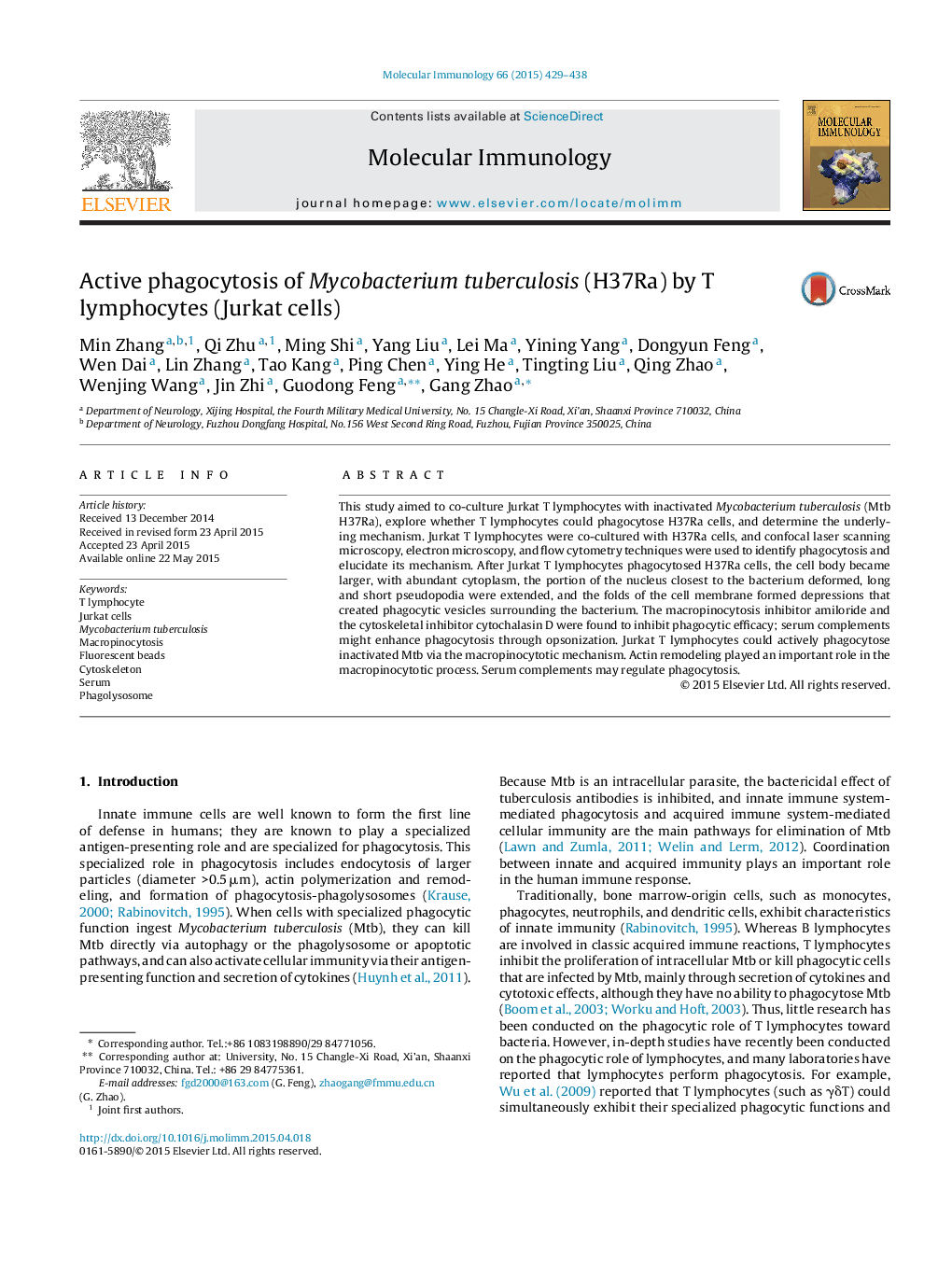| Article ID | Journal | Published Year | Pages | File Type |
|---|---|---|---|---|
| 5916528 | Molecular Immunology | 2015 | 10 Pages |
Abstract
This study aimed to co-culture Jurkat T lymphocytes with inactivated Mycobacterium tuberculosis (Mtb H37Ra), explore whether T lymphocytes could phagocytose H37Ra cells, and determine the underlying mechanism. Jurkat T lymphocytes were co-cultured with H37Ra cells, and confocal laser scanning microscopy, electron microscopy, and flow cytometry techniques were used to identify phagocytosis and elucidate its mechanism. After Jurkat T lymphocytes phagocytosed H37Ra cells, the cell body became larger, with abundant cytoplasm, the portion of the nucleus closest to the bacterium deformed, long and short pseudopodia were extended, and the folds of the cell membrane formed depressions that created phagocytic vesicles surrounding the bacterium. The macropinocytosis inhibitor amiloride and the cytoskeletal inhibitor cytochalasin D were found to inhibit phagocytic efficacy; serum complements might enhance phagocytosis through opsonization. Jurkat T lymphocytes could actively phagocytose inactivated Mtb via the macropinocytotic mechanism. Actin remodeling played an important role in the macropinocytotic process. Serum complements may regulate phagocytosis.
Keywords
Related Topics
Life Sciences
Biochemistry, Genetics and Molecular Biology
Molecular Biology
Authors
Min Zhang, Qi Zhu, Ming Shi, Yang Liu, Lei Ma, Yining Yang, Dongyun Feng, Wen Dai, Lin Zhang, Tao Kang, Ping Chen, Ying He, Tingting Liu, Qing Zhao, Wenjing Wang, Jin Zhi, Guodong Feng, Gang Zhao,
